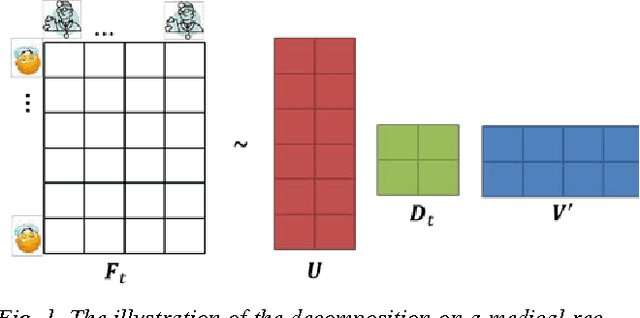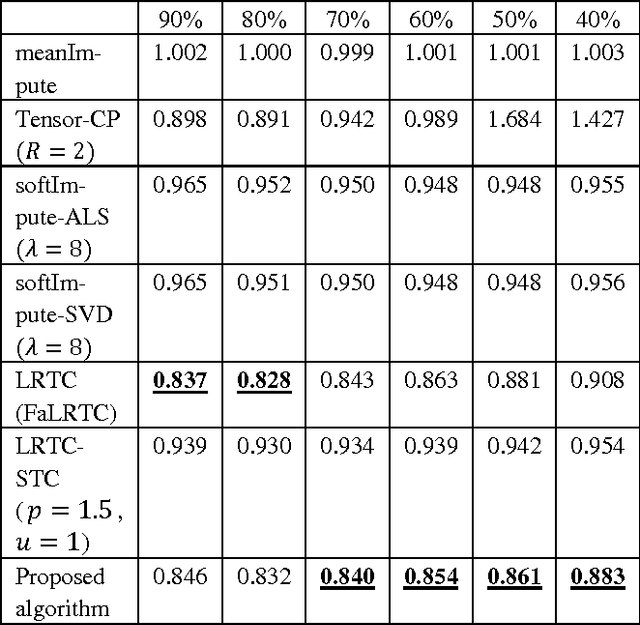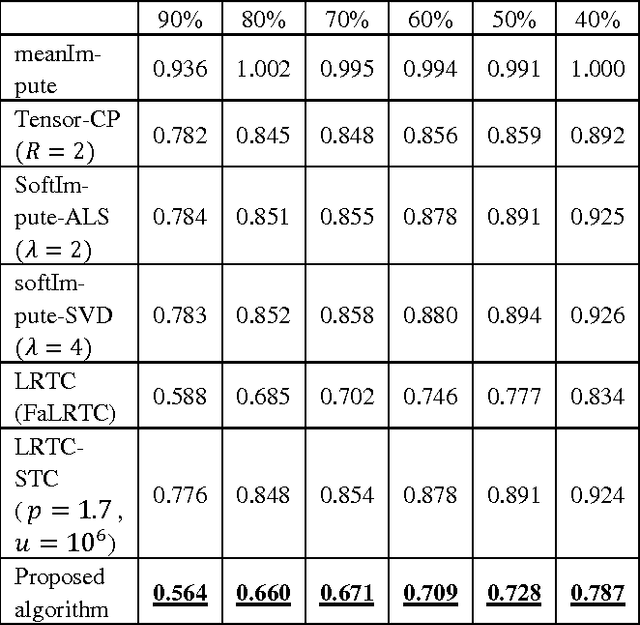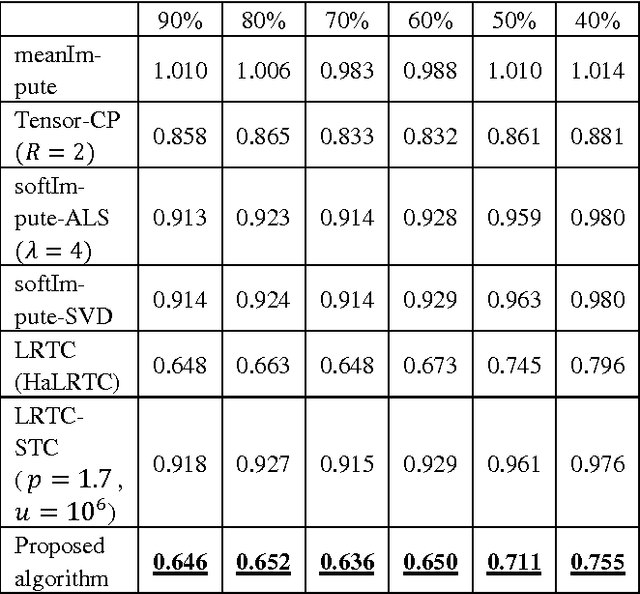Pong C Yuen
Temporal Matrix Completion with Locally Linear Latent Factors for Medical Applications
Oct 31, 2016



Abstract:Regular medical records are useful for medical practitioners to analyze and monitor patient health status especially for those with chronic disease, but such records are usually incomplete due to unpunctuality and absence of patients. In order to resolve the missing data problem over time, tensor-based model is suggested for missing data imputation in recent papers because this approach makes use of low rank tensor assumption for highly correlated data. However, when the time intervals between records are long, the data correlation is not high along temporal direction and such assumption is not valid. To address this problem, we propose to decompose a matrix with missing data into its latent factors. Then, the locally linear constraint is imposed on these factors for matrix completion in this paper. By using a publicly available dataset and two medical datasets collected from hospital, experimental results show that the proposed algorithm achieves the best performance by comparing with the existing methods.
Deformable Distributed Multiple Detector Fusion for Multi-Person Tracking
Dec 18, 2015



Abstract:This paper addresses fully automated multi-person tracking in complex environments with challenging occlusion and extensive pose variations. Our solution combines multiple detectors for a set of different regions of interest (e.g., full-body and head) for multi-person tracking. The use of multiple detectors leads to fewer miss detections as it is able to exploit the complementary strengths of the individual detectors. While the number of false positives may increase with the increased number of bounding boxes detected from multiple detectors, we propose to group the detection outputs by bounding box location and depth information. For robustness to significant pose variations, deformable spatial relationship between detectors are learnt in our multi-person tracking system. On RGBD data from a live Intensive Care Unit (ICU), we show that the proposed method significantly improves multi-person tracking performance over state-of-the-art methods.
 Add to Chrome
Add to Chrome Add to Firefox
Add to Firefox Add to Edge
Add to Edge